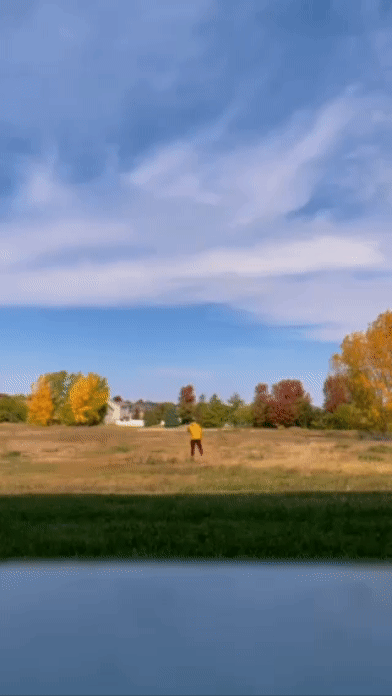A movement to rediscover our connection to food, to the earth, and to our own health.
There was a time—before convenience foods and store-bought produce—when people grew their own. They tended the earth, planting with intention, knowing the seasons, the cycles, and the rhythms of growth. Food wasn’t just something to consume—it was a gift, a relationship, a connection.
In those gardens, food has a rhythm. It’s a cycle that reflects the natural world around us. It’s alive. The act of planting, nurturing, and harvesting isn’t just about filling a plate—it’s about honoring a sacred relationship with the earth, with the community, and with our own well-being.
But somewhere along the way, that food connection was broken. We moved away from tending the land to relying more heavily on processed foods that lack nutrient density. Much of what we consume today is altered through processing, artificial preservation methods, and long-distance travel to reach us. This shift meant food that once nourished us with all its natural vitality is now often stripped of its nutrients and filled with preservatives to ensure a longer shelf life.
In doing so, we didn’t lose the rhythm—we simply disconnected from it. And in the process, we moved away from a relational understanding of food. Where once food was an exchange—a living relationship between the earth, the seasons, and our bodies—we began to treat food as a mere transaction. We disconnected from the land, from the growing process, and ultimately, from the deep nourishment that comes from eating in harmony with the cycles of nature.
This is where circadian biology comes in. Our bodies were designed to thrive within the natural cycles of the earth. Every living organism—humans included—is governed by a biological clock that syncs with the rhythms of the environment. Our circadian rhythms, which govern everything from our sleep to our digestion, are deeply tied to the light, the seasons, and the foods that grow around us.
Food isn’t just fuel—it’s information. The way we consume food impacts not only our energy levels but our hormones, our immune systems, and even our mood. When we eat food that’s out of sync with the natural world—processed food, artificial light, and out-of-season produce—our bodies become disrupted. We lose the natural cues our bodies rely on to know when to wake, when to rest, and when to nourish.
Our circadian biology knows the difference. When we eat food that is grown in sync with the seasons, from the earth, and with care, we give our bodies the information they need to function optimally. Fresh homegrown food is hands down better than anything a person will find in the store because it’s relational.
For example, dandelions are nature’s spring detox. They’re rich in antioxidants and liver-supporting compounds, helping to cleanse the body from the winter. Their bitter greens help stimulate digestion, ushering in the freshness and energy needed for the warmer months ahead.
Similarly, watermelon, designed for summer, is a natural hydrator. Packed with water and electrolytes, it helps replenish fluids and cool the body during the heat of summer.
These seasonal foods aren’t just a coincidence—they’re gifts from nature that align with our biological needs. Eating in tune with these rhythms doesn’t just support our bodies; it honors the natural cycles that live within us.
This is why homegrown food is so impactful. It’s not a commodity to be consumed—it’s a living, relational experience. It’s in tune with nature’s rhythms, and it helps us align our internal clocks. When we plant, grow, and eat in harmony with the land, we reconnect to our biological roots. Food is more than a transaction—it’s a living story. A story that nourishes our cells, supports our immunity, and sustains us for the long haul.
This isn’t just a movement for change; it’s a movement for real nourishment—from the ground up. It’s about bringing back the rhythm of health and harmony to our bodies by returning to the earth that knows how to nourish us best.
Imagine a world where we reclaim our connection to the land.
It starts with planting seeds. It starts with gardens—in schools, in churches, in communities, and in our own backyards. This is a call to action: to nourish from the earth, to grow in harmony with our bodies, and to heal the disruptions of modern living.
Flourishing is not an accident—it’s an act of intention. This is where true victory begins—not in a trophy or a goal achieved, but in the quiet, powerful act of choosing to invest in what sustains us: our health, our communities, and the very soil beneath our feet.
So, take this step with us.
Plant. Teach. Share. And in doing so, embrace the richness of life itself—because when we grow together, we rise together.
“Give a man a fish, and you feed him for a day. Teach a man to fish, and you feed him for a lifetime.”
But what if we go deeper?
Teach a man to grow a garden—and you nourish generations.
This is not just about growing food—it’s about growing knowledge, growing community, and growing health. When we teach each other how to tend the earth and nourish our bodies, we are sowing the seeds of a future that thrives.
By adding your garden to our map, you’re not just planting seeds in the soil—you’re planting the roots of a stronger, more connected community. Every garden is a story of growth, of people coming together to nurture the land and each other. Whether it’s a community garden, or a school or church garden, your garden becomes a place of transformation—a living testament to the power of collective action.
Let’s show the world what happens when we choose to grow together!
Want to start your own community garden?
We will be sharing a guide later this week!
Forget junk mail, I’m bringing “real” insights as a part of the KeyWellth commitment. Who has time for junk mail anyways? Not me!
We are here to fill our life with meaning…are you ready to elevate?



Health science nerd and educator.